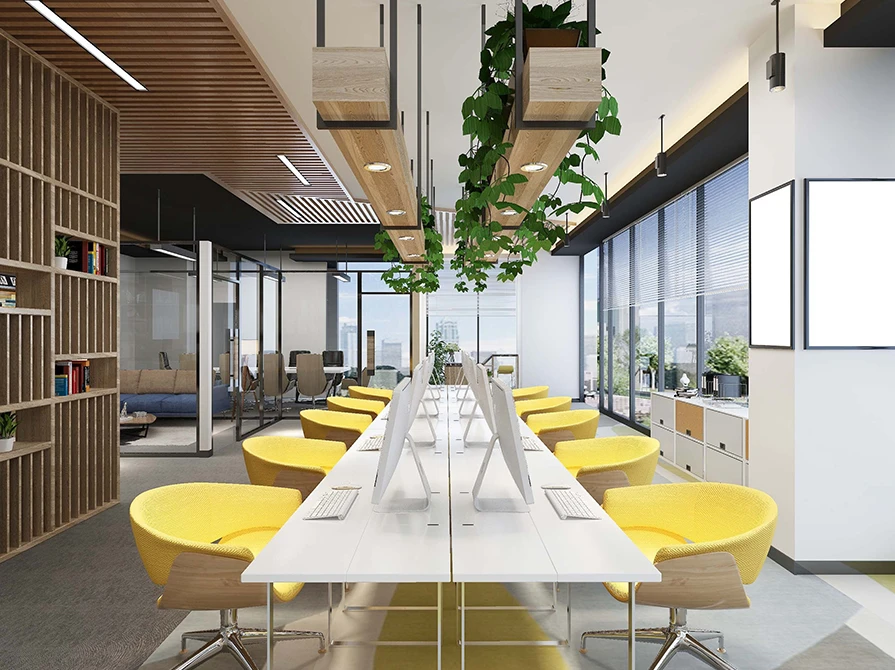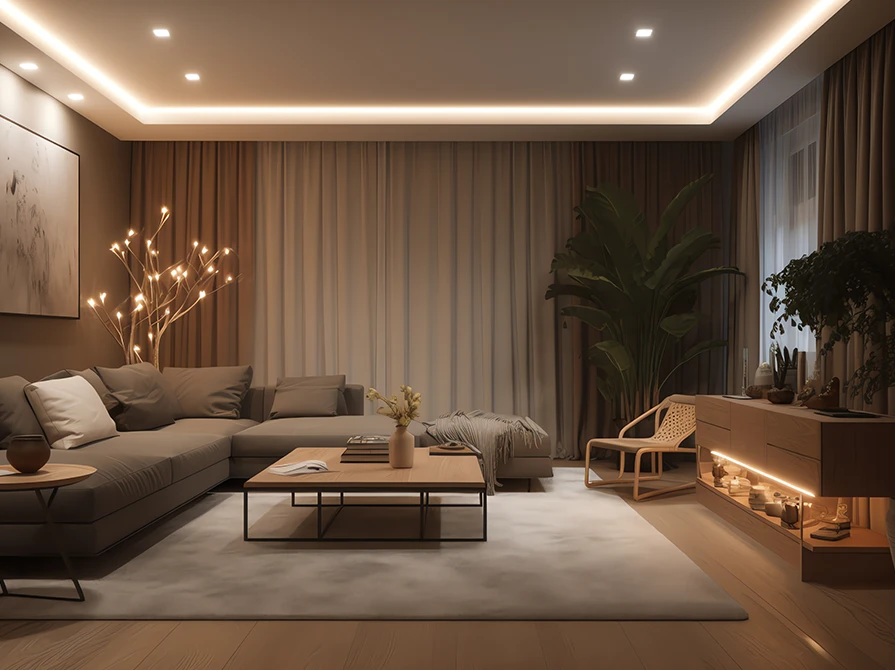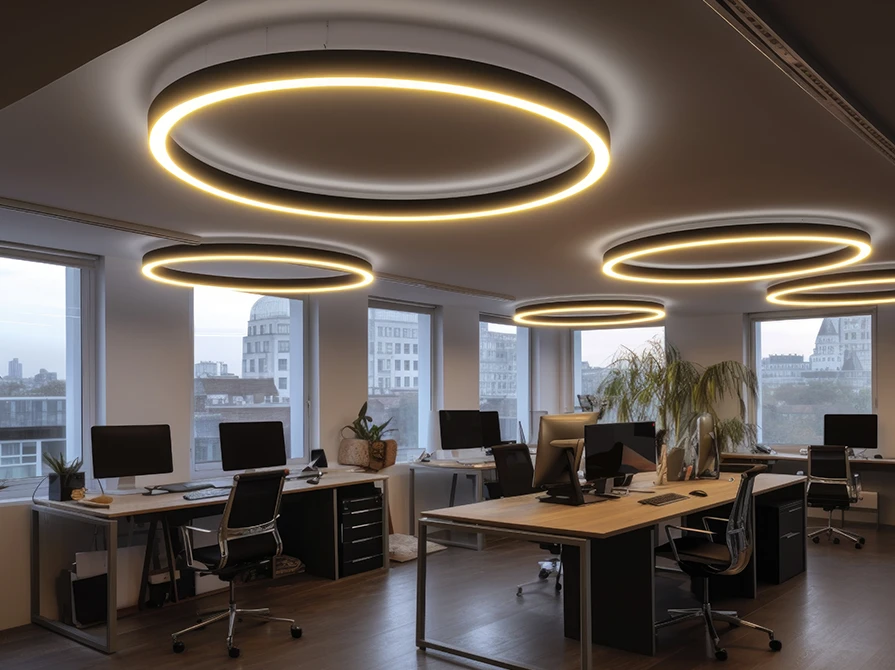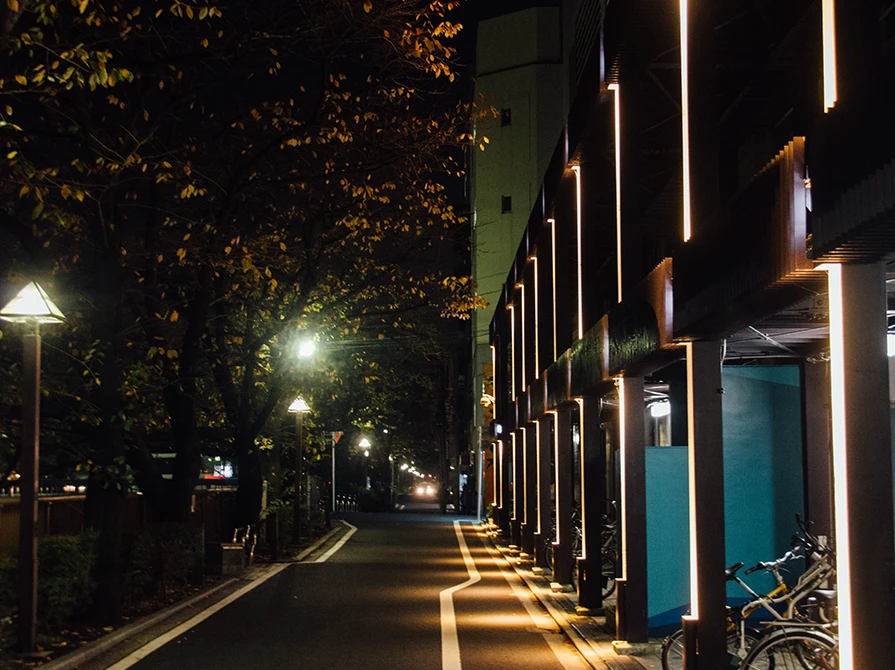

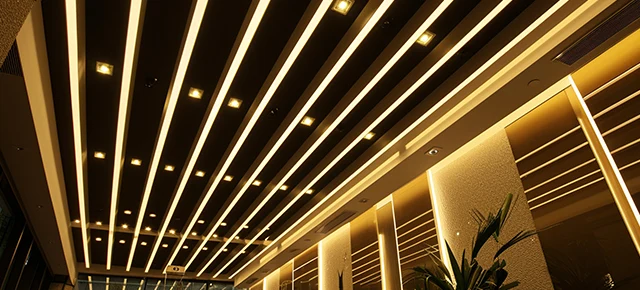
Architectural Lighting design is the seamless integration of art, design, and technology to elevate architectural structures and spaces. It strategically utilizes light and shadow, indoor and outdoor lighting, and natural and artificial light to accentuate the architectural features and create an environment that helps evoke emotions in people.
And hence, it is vastly different from general lighting.
While general lighting is all about uniformly illuminating a space and meeting the primary need for visibility (typically through overhead installations or evenly distributed light fixtures), architectural lighting is an intricate form of artistic expression. It is a purposeful endeavour to shape and dramatize, harmonizing fixtures with architectural features and projecting distinct beams and designs to incite visual intrigue amongst people.
Understanding architectural lighting means understanding the significance of the colour, temperature, intensity, direction, and distribution of light and the skillful use of shadows in how we perceive a space. The strategic use of lighting and shadows helps to guide focus to particular points, establish focus zones, arrange the order of elements within a room, and much more.
Architectural lighting helps bring a space to life and evoke emotions of comfort, spaciousness, intimacy, or magnificence, as appropriate for said space. Modifying our perception of scale also affects the way we interact with our surroundings. It not only helps personify a space with personality but also makes the atmosphere interesting, inviting viewers to perceive and engage in its story.
While talking about light and its role in creating captivating spaces, it is important not to forget about shadow as a crucial design element in architectural lighting. The play of shadows contributes to the meaning of a built environment. The deliberate control and orchestration of shadows can impact the aesthetics of an architectural structure, further helping the lighting designers achieve specific visual effects and emotions within a space. Listed below are some of the ways shadows enhance lighting design for architectural spaces.
1.Shaping Space and Form:
Designers and architects make use of shadows to alter the perception of space by strategically selecting and placing the light sources in a way to cast shadows and emphasize the shape of the architectural form, as needed. For example, downlighting (which means casting the light downwards for visibility) can soften features and provide a sense of warmth, comfort, and coziness. On the other hand, uplighting creates dramatic upward shadows, adding contrast and emphasizing height to highlight the grandeur of certain architectural elements.
2.Depth and Dimension:
Shadows also add depth and dimension to a space and create the illusion of layers, making them an interesting design element to experiment with.They impact the way we perceive the shape and position of objects.
3.Highlighting Architectural Details:
Shadows can act as a spotlight, drawing attention to specific architectural elements. By carefully positioning lights to create contouring shadows, lighting designers can accentuate the features of intricate moldings, sculptures, and any kind of textured surface, making them more prominent and enticing for viewers.
4.Emotion and Atmosphere:
Shadows can have a significant impact on our emotional state and the atmosphere surrounding us. The intensity, direction, and movement of shadows can evoke a wide range of feelings. Gentle, soft, and diffused shadows can incite a feeling of calmness, while sharp, dramatic shadows can evoke emotions of excitement, drama, and intense thrill. Moreover, they can contribute to creating spaces that feel private and intimate. For example, in residential and hospitality settings, soft, indirect lighting with gentle shadows can create cozy, intimate environments, perfect for relaxation.
5.Narrative and Storytelling:
Shadows can play a compelling role as a storytelling tool, enhancing the narrative in several ways. Whether it is for symbolism, visual metaphors, or characterization, shadows intensify the overall storytelling experience by setting the mood and impacting the visual aesthetics to keep the viewers engaged and interested. Whether it’s the architectural design of a theater, an exhibition, a museum, or any other space, shadows contribute to the depth of the narrative.
6.Dynamic Effects:
The advancements in technology allow designers and architects to explore dynamic shadow effects using automated lighting systems that can create moving shadows. This form of architectural lighting design comes in particularly handy in concerts, theaters, art exhibitions, art installations, fashion shows, ramp walks, and other entertainment-based events. Outside of this, technology-based architectural lighting design can also prove to be immensely effective in the healthcare and manufacturing sectors, where there are specific lighting requirements.
Architectural lighting design continues to advance with our world’s modern innovations and methods like grazing, washing, and emphasizing, to direct attention to specific architectural attributes. Hence, lighting can be used in various ways to create different dramatic shadow effects in architectural lighting, some of which are mentioned below:
1.Silhouettes:
This sort of effect is created when the light source is placed directly behind the subject with barely any light on it. It allows the designers to emphasize the dark outlines of the subject in front of contrasting backdrops, resulting in striking and dramatic visual compositions. For example, in museums, certain sculptures are positioned in front of walls with uplighting to cast a silhouette. This draws the viewers’ attention to the contrasting details and outlines of the sculpture that the curator wants to showcase.
2.Texture Emphasis:
The texture of surfaces can be accentuated by strategically utilizing the intensity and direction of light in the lighting designer’s favour. Whether it is a rough stone surface, intricate carvings, or textured walls, carefully casting shadows can help highlight certain elements of the architectural design, making the space more visually and tactically engaging.
3.Defining Boundaries:
One key technique for adding drama to a space is by defining spatial boundaries. By carefully placing light sources at the right positions, (think entrances, corridors, or even transition areas between different rooms), architectural lighting designers cast shadows that define the separate paths and act as a guide to create a sense of wonder. For example, shadows in restaurants, created by pendant lights on dining tables, not only create a soft sense of intimacy but also add to the overall ambience of the place.
4.Theatre and Mystery:
The ability to produce moving patterns of light and shadow with the help of automated lighting systems is particularly effective in adding an element of intrigue to a scene as well as space. Several interactive art and museum exhibits creatively use light and shadow effects to draw attention and spotlight specific aspects. Moving shadows in such art exhibits or theatrical plays bring the environment alive.
With the advancements in technology across sectors, the space of architectural lighting design is also evolving. With theaters and concerts making use of coloured, high-intensity spotlights to increase visibility while also enhancing the ambience of the event, museums and restaurants are exploring softer, gentler lighting designs to foster intimate, comfortable environments. As we continue to push the boundaries of lighting technology in design and architecture, there is a promise to see more breathtaking and immersive environments in the near future.
